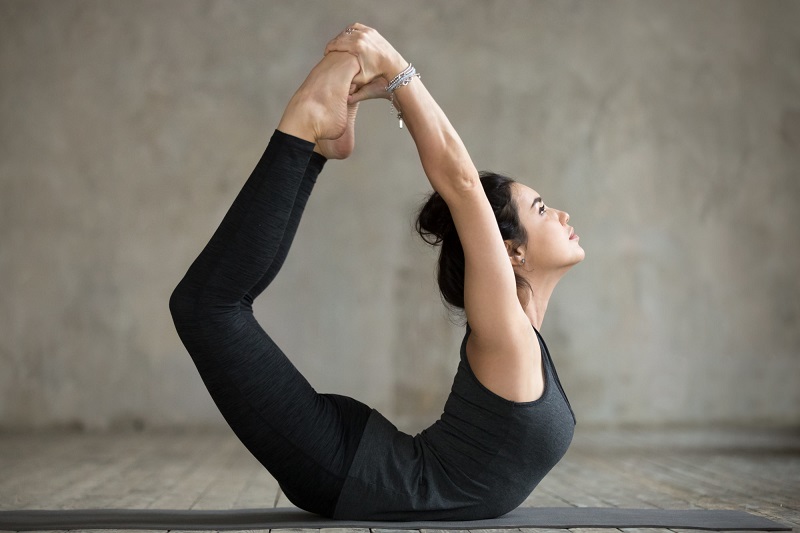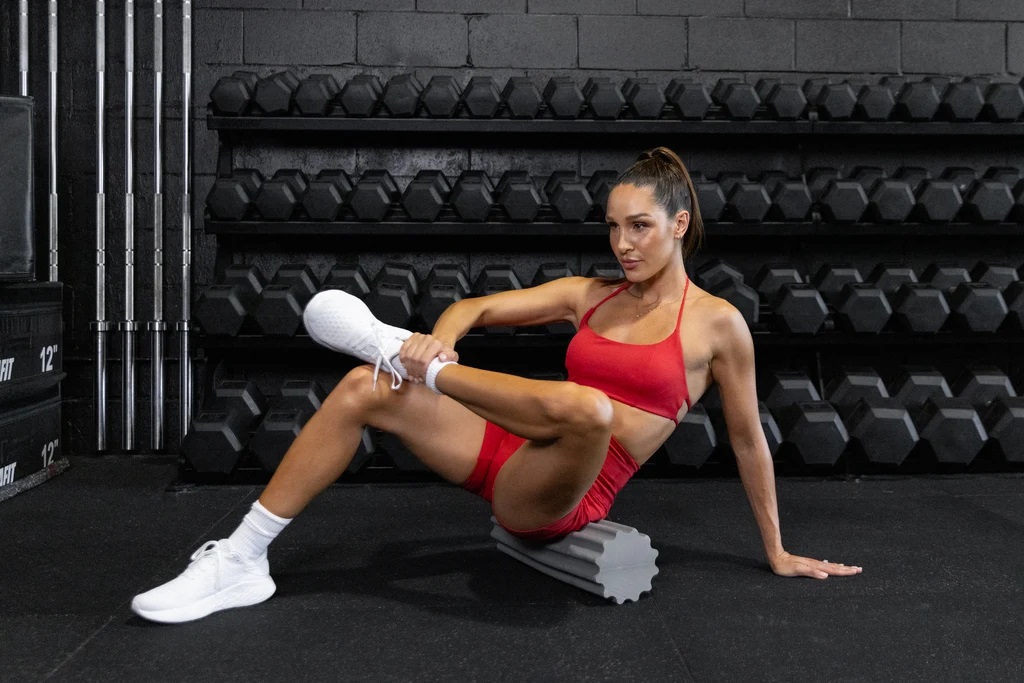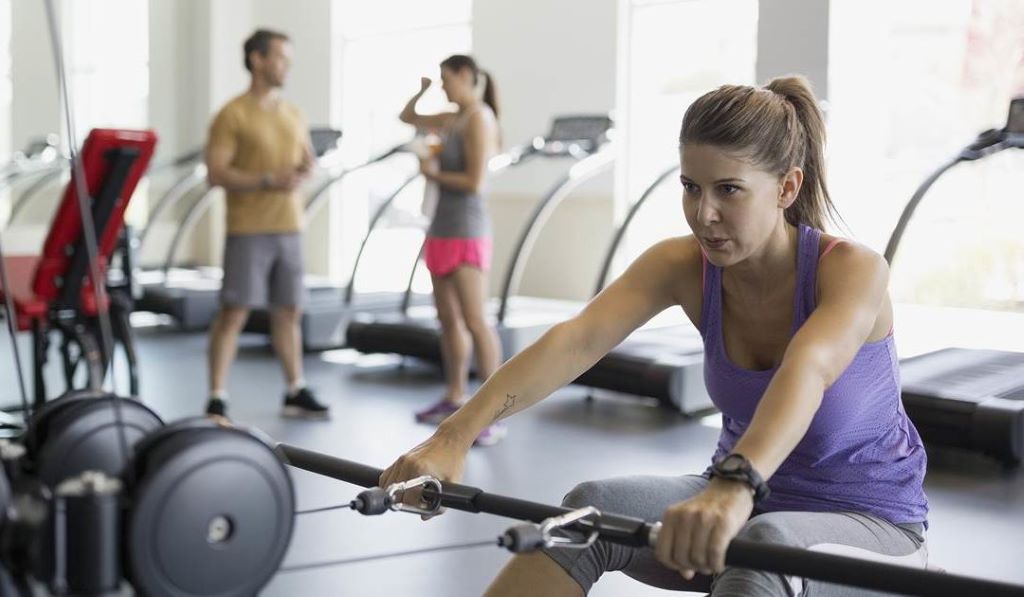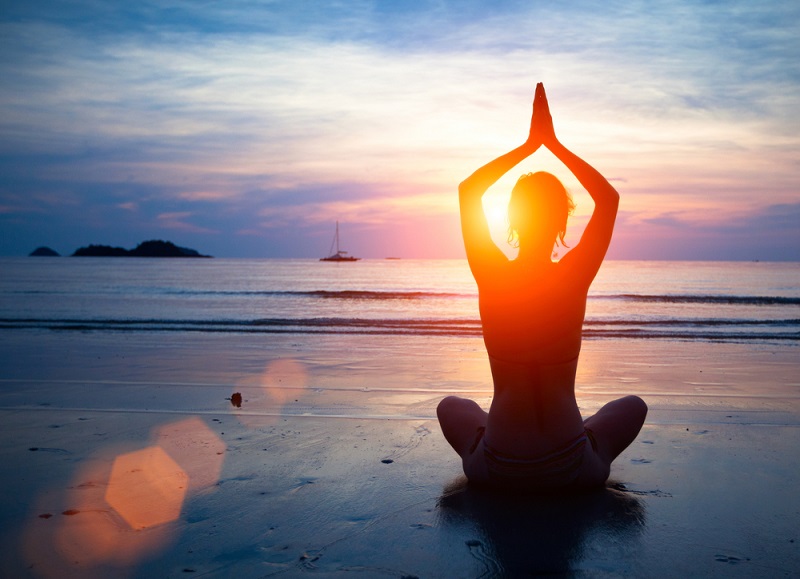To run or not to run on asphalt, that is the question: advantages and disadvantages and the keys to doing it safely run or not to run on asphalt, that is the question: advantages and disadvantages and the keys to doing it safely.
The definitive guide to gain muscle effectively: all the keys that will influence The definitive guide to gain muscle effectively: all the keys that will influence
One of the most well-known Yoga postures that involve a backward extension of the spine or backbend is Dhanurasana or the Bow Pose. The name of this posture responds to the fact that our body, when we carry it out, reflects the position of a bow to shoot arrows, with the arms being the rope and our trunk and legs being the body of the same.
Through Dhanurasana we strengthen the muscles of our back , which participate in the movement to reach the final posture, we improve the mobility of the shoulders and we stretch both our abdomen and our chest and legs. It is a relatively simple posture if we know the technique, so let’s see how to carry it out step by step.
The Dhanurasana Technique or the Yoga Bow Pose
It is important that before getting down to work with the bow posture we have done a good warm-up including the mobilization of our entire spine ( the sun salutation sequence can be a good way to start your Yoga practice) and the mobilization from our shoulders.
Once prepared, we lie face down on the floor, with our arms extended to our sides and our knees shoulder-width apart. We flex our right leg and grab the instep or ankle of our foot with our right hand (depending on the mobility of our shoulders), bringing our foot closer to the buttock. We do the same with the left foot and the left hand.
Chakrasana or the posture of the Yoga wheel: learn to do it step by step
From that position, we try to extend our legs at the same time that we raise our trunk from the ground; If we breathe in at the same time as we raise our trunk, the movement will be much easier. Keep your eyes and head forward. Our body must remain supported on the mat from the navel down.
To understand the mechanics of this posture, we must take into account that what makes the trunk rise and stand up is the push of the legs as they extend backward and upwards and the tension of the arms. If we try to climb only with the strength of the back muscles, we may not get very far.
Hold the position for five seconds, rest, and repeat. To rest from this posture, you can then perform the child’s posture or Balasana to relax your back.
Bow Pose Variations to make it easier or more difficult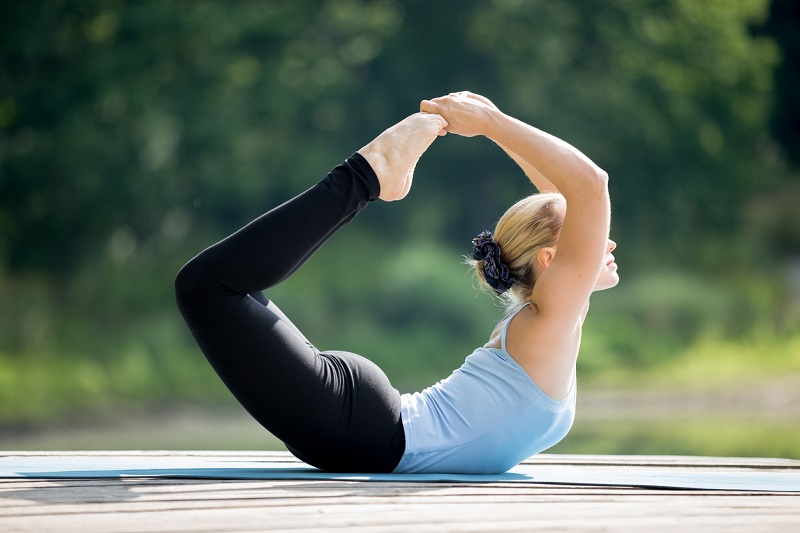
If you are new to Yoga, you can start by practicing the bow posture unilaterally, that is, only holding one foot with the hand on the same side. Keep the other leg stretched out on the ground and the other arm bent with the palm resting on the ground a little in front of your shoulder. Raise your trunk by extending the leg that you have grasped and leaning on your free hand, which makes the exercise much easier. Repeat changing arms and feet and rest.
If you want to go to the next level of difficulty, you can try reaching for your leg by reaching over your head instead of lifting it to the side. To perform this variation you will need good mobility in both the knees and the shoulders.

